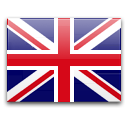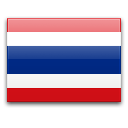What a First Aid Kit Contains?
Wherever you are, at home or at work, safety is always the top priority, especially in a large workplace with many employees. We never know when an accident or sudden illness will occur. That's why it is important to be prepared and have the right first aid equipment with you.
A well-stocked first-aid kit is important for treating minor injuries at home, work or outside. But what kinds of emergency first aid equipment should a first aid kit contain? Don't worry, Bangkok First Aid will explain everything to you right now.
Suggested Items to Put in a First Aid Kit
A First aid kit should be available in vehicles, homes and workplaces. You will find find a list of first aid supplies to put in your first aid kit and more info here. Specialized items may be necessary based on regional first aid needs.
- Durable case or bag.
- First Aid Manual – In the first aid kit, having a manual that explains how to use the first aid kit including how to properly treat various medical emergency, is very useful. But it does not replace a proper first aid training.
- Emergency phone numbers/coins/phone card – used in an emergency to assist with remembering important contact information.
- Gloves – to protect rescuer against bloodborne pathogens.
- Ventilation barriers (face shield or CPR pocket mask) – used to protect rescuer against disease transmission.
- Large absorbent dressings; various sizes – used to help stop bleeding.
- Sterile gauze pads; various sizes – used to help stop bleeding and dress wounds.
- Clinging rolled bandages; various sizes; – used to dress wounds.
- Adhesive bandages; various sizes – used to dress wounds. Plasters will protect wounds from dust or dirt. You should have a variety of plasters on hand to match the nature of the wound.
- Adhesive tape – used to dress wounds.
- Special burn dressing (nonadherent pads) – used to dress burn wounds.
- Sterile bandages of various sizes.
- Triangular bandages – used to immobilize dislocations and fractures.
- Sterile cotton – used to dress wounds.
- Cotton tipped swabs – used to clean wounds.
- First aid scissors (trauma shears) – use to cut bandages and patient apparel.
- Tongue depressors – to check vital signs during illness assessment; could also be used as splinting material for finger dislocations and fractures.
- Tweezers – to assist in removing foreign material.
- Safety pins – to attach and secure bandages.
- Penlight – for light and to use as an examination tool.
- Oral thermometer – to measure temperature as a vital sign.
- Rehydration salts – for hydration and patients with heatstroke; burns, eye, or wound wash.
- Splints – to immobilize dislocations and fractures.
- Emergency blanket – for warmth; to cover patients with shock.
- Cold packs – for bruises, strains, sprains, eye injuries, stings and dislocations, and fractures.
- Hot packs – for venomous bites and stings.
- Vinegar – to neutralize stinging cells of jellyfish
- Fast-acting glucose tablets - to treat low blood sugar
- Large Plastic bag – use to dispose of gloves and medical waste; may be used in lieu of actual gloves as a barrier.
- Small paper cups – for drinking and to cover eye injuries.
- Tourniquet - to stop a massive bleeding
- Israeli bandage - special compression bandage to stop bleeding
- Vented chest seal - to treat open chest wounds and tension pneumothorax
- Marker (pen)
- Normal saline solution - to disinfect wounds
- Povidone-iodine (PVP-I) - to help treat and prevent infection in minor cuts, scrapes and burns.
- Special burn dressing - to treat burns
You can purchase a first aid kit or make your own. Keep your supplies in a sturdy, clear plastic box or in a soft-sided bag so you can see what’s inside.
Having first aid training is a good idea. So that if an accident occurs that necessitates first aid, you will know how to use this emergency first aid equipment and be able to handle it properly before the ambulance arrives.
Are you looking for a first aid kit or medical bag? Visit our store now.



